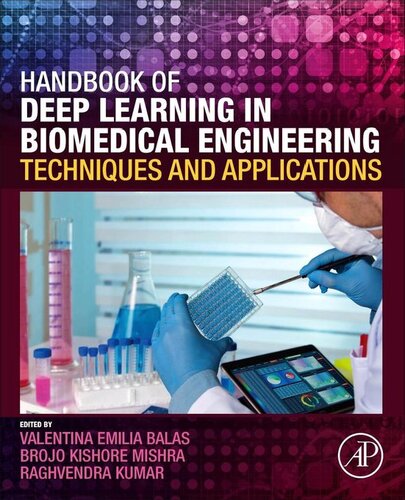

Most ebook files are in PDF format, so you can easily read them using various software such as Foxit Reader or directly on the Google Chrome browser.
Some ebook files are released by publishers in other formats such as .awz, .mobi, .epub, .fb2, etc. You may need to install specific software to read these formats on mobile/PC, such as Calibre.
Please read the tutorial at this link. https://ebooknice.com/page/post?id=faq
We offer FREE conversion to the popular formats you request; however, this may take some time. Therefore, right after payment, please email us, and we will try to provide the service as quickly as possible.
For some exceptional file formats or broken links (if any), please refrain from opening any disputes. Instead, email us first, and we will try to assist within a maximum of 6 hours.
EbookNice Team

Status:
Available5.0
17 reviewsDeep learning (DL) is a method of machine learning, running over artificial neural networks, that uses multiple layers to extract high-level features from large amounts of raw data. DL methods apply levels of learning to transform input data into more abstract and composite information. Handbook for Deep Learning in Biomedical Engineering: Techniques and Applications gives readers a complete overview of the essential concepts of DL and its applications in the field of biomedical engineering. DL has been rapidly developed in recent years, in terms of both methodological constructs and practical applications. DL provides computational models of multiple processing layers to learn and represent data with higher levels of abstraction. It is able to implicitly capture intricate structures of large-scale data and is ideally suited to many of the hardware architectures that are currently available. The ever-expanding amount of data that can be gathered through biomedical and clinical information sensing devices necessitates the development of machine learning and artificial intelligence techniques such as DL and convolutional neural networks to process and evaluate the data. Some examples of biomedical and clinical sensing devices that use DL include computed tomography (CT), magnetic resonance imaging (MRI), ultrasound, single photon emission computed tomography (SPECT), positron emission tomography (PET), magnetic particle imaging, electroencephalography/magnetoencephalography (EE/MEG), optical microscopy and tomography, photoacoustic tomography, electron tomography, and atomic force microscopy. Handbook for Deep Learning in Biomedical Engineering: Techniques and Applications provides the most complete coverage of DL applications in biomedical engineering available, including detailed real-world applications in areas such as computational neuroscience, neuroimaging, data fusion, medical image processing, neurological disorder diagnosis for diseases such as Alzheimer’s, attention deficit hyperactivity disorder (ADHD), and autism spectrum disorder (ASD), tumor prediction, and translational multimodal imaging analysis.